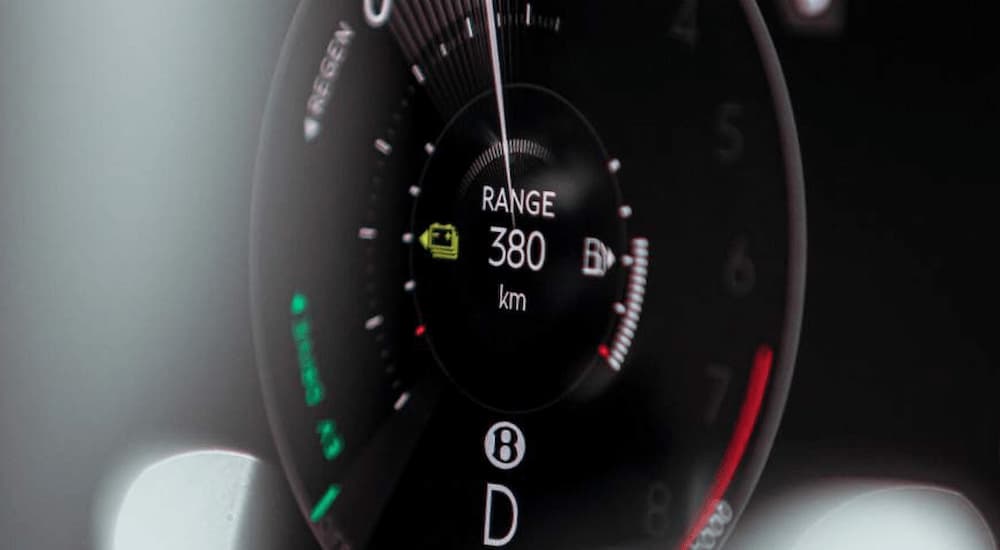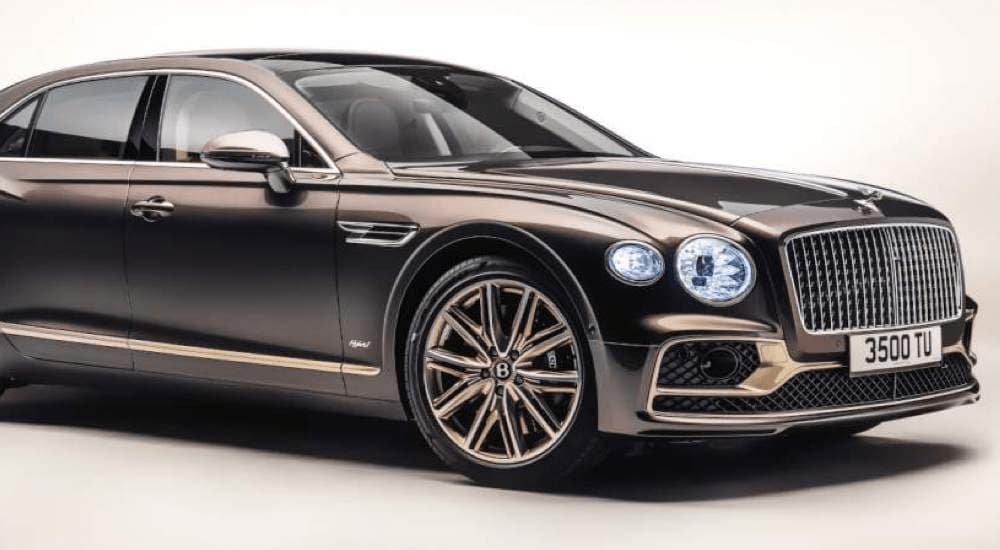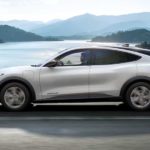If you’re someone who keeps even a little bit of an eye on the auto industry, then you’ve certainly noticed by now that pretty much every car company out there is committed to a single goal: going all-electric in the not-so-distant future. The legendary British auto manufacturer Bentley, well known for crafting some of the most luxurious (and expensive) cars on the road, is no exception to this. Bentley has recently announced that it has been working on an entry into the Electric Vehicle (EV) market and plans to launch it for the 2025 model year, with four more vehicles joining it in the years that follow.
Beyond simply pushing for an EV lineup, however, Bentley is going further, and it has been working for some time now on changing how it makes its vehicles. The goal, as is the goal of a number of other manufacturers, is to reduce the carbon footprint and the impact on the environment overall from building cars. This would result in a manufacturing process that doesn’t demolish the planet while also making vehicles that don’t produce harmful emissions. How is Bentley doing all of this? Glad you asked…
The Beyond100 Plan
First announced in 2020, Bentley’s “Beyond100” plan is its way of working toward a more sustainable system of doing business that reduces its environmental impact in pretty much every conceivable way. The first models that Bentley developed with this mindset included several hybrid options, such as the Flying Spur Hybrid and Bentayga Hybrid vehicles, though its commitment is to go much further. While an all-electric future is part of this plan, the major first step was the development of the Bentley “Dream Factory” in Crewe, which has been the primary effort in changing how the brand makes its vehicles.
The Dream Factory
Although a great deal of focus in the past has been on the harmful effects of emissions from vehicles on the road, in recent years, there’s been more attention paid to the effort of manufacturing new cars in the first place. One of the big reasons that buying a used vehicle can help out the environment is that it keeps a car on the road longer, justifying the use of resources and the pollution created when it was made. Car companies like Bentley have started to recognize that making a vehicle is harmful in the first place, and they have been making efforts to ensure their factories and manufacturing plants are more environmentally friendly.
For Bentley, this aspect of the Beyond100 plan has largely revolved around its goal of a “Dream Factory” that is carbon neutral and as efficient as possible. This is something the brand has been working on for more than a decade, with additional goals it wants to hit in the years to come, but so far, the results are definitely impressive. Just in the last few years, Bentley has redesigned its factory and made huge improvements in how its vehicles are built. The result is an overall reduction in the environmental impact of more than 76% since the efforts started in 2010.
Even as Bentley production ramped up from 2020 to 2021 with an increase in volume of 38.3%, the environmental impact went down. For starters, Bentley has made huge efforts to reduce how much water is consumed in manufacturing, with a reduction of 26.6% in 2021 at its factory. This is thanks in part to many employees working from home, but it has also been due to changes at the plant, including multiple water-capture tanks that can store rainwater for use by the facility, as well as water recycling systems to reduce overall use.
Bentley has also shifted to using green gas and biofuels for its onsite logistic vehicles, which has resulted in a reduction of CO2 emissions at its factory of more than 70%. This has also been aided by the installation of an extensive solar panel system for power, which consists of more than 31,000 panels, with plans for additional panels in the years to come. Bentley has reduced its use of volatile organic compounds, often found in commercial and industrial adhesives, by more than 17% and reduced overall energy consumption per vehicle by more than 17% as well. Overall, the efforts are working, and Bentley continues to invest in additional improvements to improve those numbers even more.
The First Bentley EV
The development of Bentley’s “Dream Factory” is great, but it’s hardly something that’s going to impact drivers on a daily basis. What’s more likely to get a lot of attention in the years to come is their development of the world’s first electric Bentley. Sadly, there’s essentially no information about what the first Bentley EV is going to be like, other than a pretty safe bet that it will focus on exquisite luxury and bold performance. We’ve already seen the first steps toward the Bentley EV, which has included several hybrid models.
Numerous Bentley Flying Spur models are available as hybrids, including the Flying Spur Azure and Flying Spur Mulliner, along with a hybrid version of the Bentayga. These vehicles are already proving that Bentley is committed to electrified cars and SUVs that don’t sacrifice performance or luxury for reduced emissions––some of its Flying Spur hybrids can go from 0 to 60 in just 4.1 seconds. In other words, the first Bentley EV is sure to be dripping with luxury features and powered by an impressive battery and motor system that will make it fast, responsive, and incredibly fun to drive.
Four More in Four Years
Bentley’s current commitment goes beyond its first EV model, however, as the brand has dedicated itself to hitting what it has called a “Five-in-Five” plan. It’s pretty simple: Bentley wants to launch its first EV in 2025, with another model every year for the following four years. This means that by 2030, the brand will have five different EVs available for its customers, which is a bold step toward an all-electric future. In fact, Bentley’s commitment is that by 2026 it will only produce plug-in hybrid and EV models––no more purely gasoline Bentleys after 2026 if it manages to hit its goals.
The Long-Term Goal
Whether Bentley will be able to hit its 2026 goal of eliminating traditional gasoline models remains to be seen, but that’s only a step toward its long-term commitments. The goal is to be end-to-end carbon neutral by 2030––something Bentley has already started working on since the production facility in Crewe was certified as carbon neutral in 2020, making it the first UK luxury car factory to hit that goal. End-to-end carbon neutrality, however, would require that its suppliers and retail locations also meet sustainability goals by 2030 in order to operate in a fully carbon-neutral manner.
The production of plug-in hybrid models is also facing a deadline; the brand has declared that by 2030 it only wants to be producing battery electric vehicles. This makes Bentley one of several major manufacturers who are committed to eliminating all non-EV models within the next decade. Only time will tell, however, whether Bentley and other car companies can hit these goals and push the industry toward the all-electric future that’s waiting on the horizon.
Will the Beyond100 Plan Work?
That’s the big question, and so far, the answer seems to be pretty clearly “yes.” Bentley has been hitting its goals regularly, and all of its updates have been on target without any indications that it is pushing back dates on when it plans to have things done. Even in the midst of the worst pandemic in a century, with major upheavals in manufacturing and sales of vehicles, Bentley has remained on-task and working toward hitting its goals as part of the Beyond100 plan. We’ll have to see how things shake out, but it seems clear the brand plans on being an industry leader in making luxury sustainable and responsible.






